Cover photo by Georg Jacobs.
Find the Red Basker in the FBIS database (Freshwater Biodiversity Information System) here.
Family Libellulidae
Identification

Mpempe Pan, KwaZulu-Natal
Photo by Ryan Tippett
Medium sized
Length up to 44mm; Wingspan reaches 75mm.
The Red Basker is deep red species with conspicuous dark patches at the base of the hind wings. Males are easily confused with Urothemis luciana (St. Lucia Basker), but are smaller and less robust. Additionally the Red Basker shows less extensive amber patches at the base of the forewings. This amber is in fact, often absent in U. assignata. Both sexes of Urothemis assignata have 7 Ax veins in the forewing (Urothemis luciana has 8 or 9 Ax veins in the forewing).
Females are dull rufous in colouration. They can be mistaken for the females of Urothemis luciana (St. Lucia Basker) and Urothemis edwardsii (Blue Basker). They can be recognised by the number of Ax-veins in the forewing and by the shape of the dark patches in the hind wings.
Click here for more details on identification of the Red Basker.
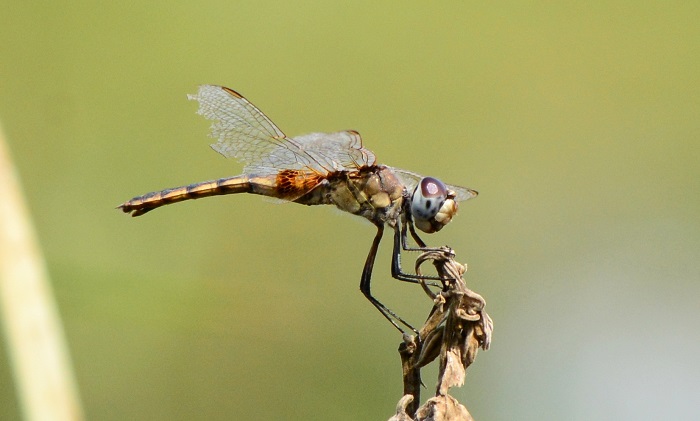
Muzi Pan, KwaZulu-Natal
Photo by Ryan Tippett
Habitat
The Red Basker’s natural habitats are freshwater lakes, pans, dams, marshes, and slow-flowing sections of rivers. They prefer still-water habitats with abundant plant growth like reeds and sedges. Non-breeding individuals can often be found in open grassy areas away from water.

Photo by Ryan Tippett
Behaviour
Red Baskers are perch hunters and spend as much time perched as they do darting off to intercept prey, or to chase off a rival. Urothemis assignata has a powerful, swift flight. They like to sit in open, sunny positions, conspicuously perched on top of a reed or bush, etc. During the heat of the day, they can often be seen in the obelisk position, pointing their abdomens at the sun to reduce the amount of direct sunlight on their bodies. Females are most often seen a short distance away from the water.
The Red Basker is on the wing from October to May in South Africa.
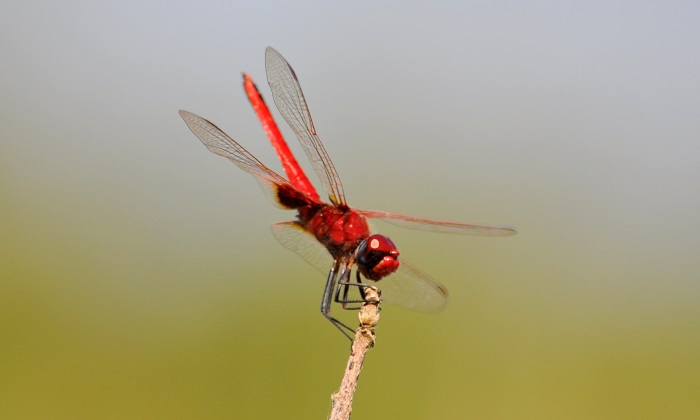
Kosi Bay, iSimangaliso Wetland Park, KwaZulu-Natal
Photo by Ryan Tippett
Status and Conservation
The Red Basker is a locally common species. It is listed as of Least Concern in the IUCN Red List of Threatened Species. The Red Basker is fairly resistant to habitat degradation and commonly occupies man-made habitats, providing its habitat requirements are met.
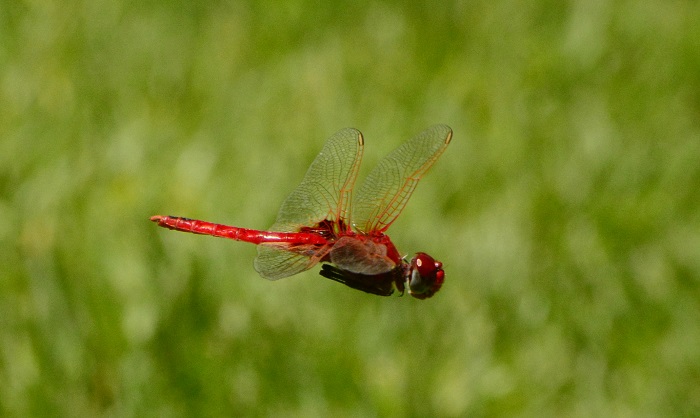
Carnarvon district, Northern Cape
Photo by Ryan Tippett
Distribution
The Red Basker is widespread throughout much of Sub-Saharan Africa. In South Africa, it is most abundant in the wetter savanna regions of the north and east. However, vagrants are liable to turn up almost anywhere.
Below is a map showing the distribution of records for Red Basker in the OdonataMAP database as at February 2020.

Below is a map showing the distribution of records for Red Basker in the OdonataMAP database as of December 2024.
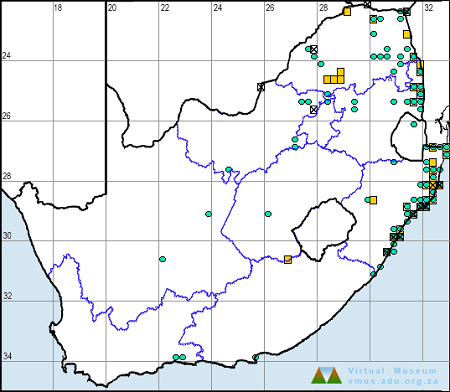
The next map below is an imputed map, produced by an interpolation algorithm, which attempts to generate a full distribution map from the partial information in the map above. This map will be improved by the submission of records to the OdonataMAP section of the Virtual Museum.


Ultimately, we will produce a series of maps for all the odonata species in the region. The current algorithm is a new algorithm. The objective is mainly to produce “smoothed” maps that could go into a field guide for odonata. This basic version of the algorithm (as mapped above) does not make use of “explanatory variables” (e.g. altitude, terrain roughness, presence of freshwater — we will be producing maps that take these variables into account soon). Currently, it only makes use of the OdonataMAP records for the species being mapped, as well as all the other records of all other species. The basic maps are “optimistic” and will generally show ranges to be larger than what they probably are.
These maps use the data in the OdonataMAP section of the Virtual Museum, and also the database assembled by the previous JRS funded project, which was led by Professor Michael Samways and Dr KD Dijkstra.
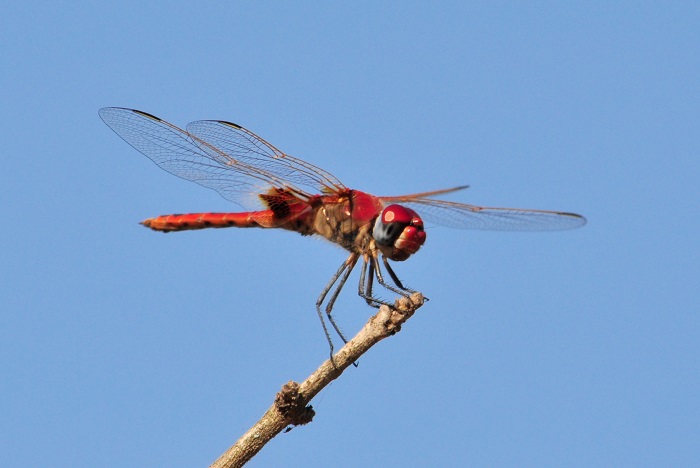
Kosi Bay, iSimangaliso Wetland Park, KwaZulu-Natal
Photo by Ryan Tippett
Further Resources
The use of photographs by Georg Jacobs is acknowledged. Other photographs by Ryan Tippett.
Red Basker Urothemis assignata (Selys, 1872)
Other common names: Rooisonvangertjie (Afrikaans)
Recommended citation format: Loftie-Eaton M; Navarro R; Tippett RM; Underhill L. 2025. Red Basker Urothemis assignata. Biodiversity and Development Institute. Available online at https://thebdi.org/2020/04/24/red-basker-urothemis-assignata/
References: Tarboton, M; Tarboton, W. (2019). A Guide to the Dragonflies & Damselflies of South Africa. Struik Nature.
Samways, MJ. (2008). Dragonflies and Damselflies of South Africa. Pensoft
Samways, MJ. (2016). Manual of Freshwater Assessment for South Africa: Dragonfly Biotic Index. Suricata 2. South African National Biodiversity Institute, Pretoria
Martens, A; Suhling, F. (2007). Dragonflies and Damselflies of Namibia. Gamsberg Macmillan.
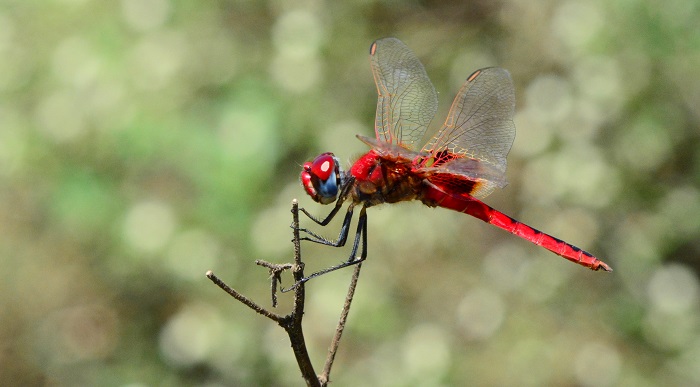
Mpempe Pan, KwaZulu-Natal
Photo by Ryan Tippett

